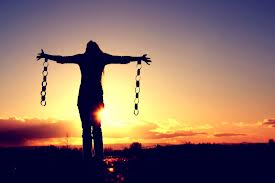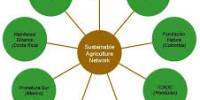Introduction:
The series of events which resulted from the declaration by the then Pakistani authority that Urdu would be the state language of the then East Pakistan is known as the language movement. It has been cemented in the history of Bangladesh. It has gone down in history as one of the glorious events. It is a source of pride for the Bangladeshi people. This event bears an obvious testimony to the rebellious and patriotic spirit of the people of Bangladesh. It is of immense national and historical significance. That the Bangladeshis are undaunted, spirited and vocal against undue impositions is epitomized by the language movement. It was the year 1952 which saw the turbulent event take place. The movement reached its culminating point on February the 21st. On this day agitated students took to streets and protested against the Pakistani decision. Language movement heralds the beginning of the outburst of the already prevailing anti-Pakistani sentiment among the people of Bangladesh. They proved that they do not cede to undue pressures and tolerate when it comes to meddling with their own affairs. That kneeling down before the authority and being submissive to foreign power is anathema to the very character of the people of Bangladesh is evidenced by the movement. Also, it reflects our collective or national personality.
In August 1947, a new state called Pakistan, comprising two far-flung wings in the west and east, separated by 1600 kilometers of foreign territory, emerged on the world map. The ideological basis of that strange phenomenon was the absurd and pernicious two nation theory of Mr. Jinnah that ignored such basic elements as language and culture and considered religion as a bond strong and sufficient enough to transform a people into a nation.
The language of the people of eastern wing of Pakistan, and they were the majority, was Bangla. It had a rich tradition of literature of over a thousand years. The Bangalees also had a highly developed culture that had little in common with the culture of the people of western wing of Pakistan. The Bangalees’ love for and attachment to their language and culture were great and when in 1952 the neo-colonial, power-hungry, arrogant rulers of Pakistan declared that ‘Urdu and Urdu alone would be the state language of Pakistan, they sowed the seed of its future disintegration.
Background and Early stage:
The present nation of Pakistan and Bangladesh were part of undivided India during the British colonial rule. The political development in East Pakistan after the partition did not exactly follow the trends set out by pre-partition politics. East bangle politics was dominated by a comparatively distant issue. It was the language issue. Out of the ill-calculated moves of the ruling elites was born a mass movement which had soon overtaken the concept of Pakistan itself and led the people of East Bengal to seek for a new identity — the Bengali national. This section will concentrate on the early stage of this movement with a particular emphasis on the leading organizers.
Even before Pakistan was created in august 1947 demand was made to make bangle the state language of Pakistan. Dr. Mohammad Sahidullah remarked as early as July 1947 that there was no reason why bangle should not be accepted as the state language once English discarded as a foreign language1. He was very right in his statement. Because the principle language of the country was bangle. It was spoken by 56 per cent of all Pakistanis, whereas Urdu was spoken by 0nly 3 percent of them. Language was a major issue of discussion not only among litterateurs but also among politicians even before Pakistan was created. In 1947 the new Pakistani elite faced the difficult task of welding its citizens into a united Pakistani nation immediately the question arose of the language in which to conduct Pakistani state business. When Mountbatten, the last governor general of India, declared the partition scheme on June 3, 1947, a handful of left wing politicians formed the people’s freedom league in July 1947 2. The party demanded that since bangle was there mother language every effort should be made to make the language suitable for such purpose and that bangle should be made the state language of East Pakistan. But In 1947, a key resolution at a national education summit in Karachi advocated Urdu as the sole state language, and its exclusive use in the media and in school. On September 2, 1947.
1. Dr. Mohammad Shahidullah, “Amader Bhasha Shamashya” (Our Language Problem), The Daily Azad, Sraban 12, 1354 (B.S.)
2. Ashu Dabi Karmashuchi Adarsha (Proposal for Immediate Demands), Published by Karuddin Ahmed, Convenor, Peoples Freedom League, East Pakistan Publishing House, Jumrail Lane, Dhaka, July, 1947.
Meanwhile, serious preparation was being taken in various forums of the central government of Pakistan under the initiative of Fazlur Rahman, the central education minister, to make Urdu the only state language of Pakistan. On receipt of this information, East Pakistani students became agitated and held a meeting on the DhakaUniversity campus on 6 December 1947, demanding that Bengla be made one of the state languages of Pakistan. The meeting was followed by student processions and more agitation. The first Rastrabhasa Sangram Parishad (Language Action Committee) was formed towards the end of December with Professor Nurul Huq Bhuiyan of Tamaddun Majlish as the convener3.
Events of 1948 to 1950:
The Constituent Assembly of Pakistan was in session at Karachi-then the capital of Pakistan-from 23 February 19484. It was proposed that the members would have to speak either in Urdu or in English at the Assembly. Dhirendranath Datta a member from the East Pakistan Congress Party, moved an amendment motion to include Bangla as one of the languages of the Constituent Assembly. He noted that out of the 6 crore 90 lakh population of Pakistan, 4 crore 40 lakh were from East Pakistan with Bangla as their mother tongue. The central leaders, including Liaquat Ali Khan, prime minister of Pakistan, and Kheaja Nazimuddin, chief minister of East Bengal, opposed the motion. On receiving the news that the motion had been rejected, students, intellectuals and politicians of East Pakistan became agitated. Newspapers such as the Azad also criticised of the politicians who had rejected the motion.
A new committee to fight for Bangla as the state language was formed with Shamsul Huq as convener. On 11 March 1948 a general strike was observed in the towns of East Pakistan in protest against the omission of Bangla from the languages of the Constituent Assembly, the absence of Bangla letters in Pakistani coins and stamps, and the use of only Urdu in recruitment tests for the navy. The movement also reiterated the earlier demand that Bangla be declared one of the state languages of Pakistan and the official language of East Pakistan. Amidst processions, picketing and slogans, leaders such as
3. Tajuddin Ahmmed’s Diary, 2 March 1948; Badrauddin Umar(ed.) Bhasha Andolon Prasanga; Kotipoy Daily, Vol. 1; (Dhaka,1988)
4. The Weekly, Naubelal, Sylhet, 4 March, 1984.
Shawkat Ali, Kazi Golam Mahboob, Shamsul Huq, Oli Ahad, Sheikh Mujibur Rahman, Abdul Wahed and others were arrested. Student leaders, including Abdul Matin and Abdul Makek Ukil , also took part in the procession and picketing. A meeting was held on the DhakaUniversity premises. Mohammad Toaha was severely injured while trying to snatch away a rifle from a policeman and had to be admitted to hospital. Strikes were observed from 12 March to 15 March.
Under such circumstances the government had to give in. Khwaja Nazimuddin signed an agreement with the student leaders. However, although he agreed to a few terms and conditions, he did not comply with their demand that Bangla be made a state language. Muhammed Ali Jinnah, the governor general of Pakistan, came to visit East Pakistan on 19 March. He addressed two meetings in Dhaka, in both of which he ignored the popular demand for Bangla. He reiterated that Urdu would be the only state language of Pakistan. This declaration was instantly protested with the Language Movement spreading throughout East Pakistan. The Dhaka University Language Action Committee was formed on 11 March 1950 with Abdul Matin as its convener.
Climax of the movement:
By the beginning of 1952, the Language Movement took a serious turn. Both Jinnah and Liaquat Ali Khan were dead-Jinnah on 11 September 1948 and Liaquat Ali Khan on 16 October 19515. Khwaja Nazimuddin had succeeded Liaquat Ali Khan as prime minister of Pakistan. With the political crisis, the economic condition in East Pakistan also deteriorated. The people of East Pakistan started losing faith in the Muslim League. A new party, the Awami Muslim League-which would later become the Awami League was formed under the leadership of Maulana Abdul Hamid Khan Bhasani in 1949. There was a growing sense of deprivation and exploitation in East Pakistan and a realisation that a new form of colonialism had replaced British imperialism. Under these circumstances, the Language Movement got a new momentum in 1952.
On 27 January 1952, Khwaja Nazimuddin came to Dhaka from Karachi. Addressing a meeting at Paltan Maidan, he said that the people of the province could decide what
5. The Amrita Bazar Patrika, 12 March, 1948.
would be the provincial language, but only Urdu would be the state language of Pakistan. There was an instantaneous, negative reaction to this speech among the students who responded with the slogan, ‘Rashtrabhasha Bangla Chai‘ (We want Bangla as the state language).
A strike was observed at DhakaUniversity on 30 January. The representatives of various political and cultural organisations held a meeting on 31 January chaired by Moulana Bhasani. An All-Party Central Language Action Committee was formed with Kazi Golam Mahboob as its convener. At this time the government also proposed that Bangla be written in Arabic script. This proposal was also vehemently opposed. The Language Action Committee decided to call a hartal and organise demonstrations and processions on February 21 throughout East Pakistan.
As preparations for demonstrations were underway, the government imposed Section 144 in the city of Dhaka, banning all assemblies and demonstrations. A meeting of the Central Language Action Committee was held on 20 February under the chairmanship of abul hashim. Opinion was divided as to whether or not to violate Section 144.
The students were determined to violate Section144 and held a student meeting at 11.00 a.m. on 21 February on the DhakaUniversity campus, then located close to the MedicalCollegeHospital. Later they decided to violate because, if government order was not violated it would mean surrender to government repressions and an end to the language movement let alone the progress of the movement. When the meeting started, the Vice-Chancellor, along with a few university teachers, came to the spot and requested the students not to violate the ban on assembly. However, the students, under their leaders – Abdul Matin and Gaziul Huq – were adamant. Thousands of students from different schools and colleges of Dhaka assembled on the university campus while armed police waited outside the gate. When the students emerged in groups, shouting slogans, the police resorted to baton charge; even the female students were not spared.
The students then started throwing brickbats at the police, who retaliated with tear gas. Unable to control the agitated students, the police fired upon the crowd of students, who were proceeding towards the Assembly Hall (at present, part of Jagannath Hall, University of Dhaka). Three young men, Rafiq Uddin Ahmed Abdul Jabbar and Abul Barkat (an MA student of Political Science) were fatally wounded. Many injured persons were admitted to the hospital. Among them Abdus Salam, a peon at the Secretariat, subsequently succumbed to his wounds. A nine-year-old boy named Ohiullah was also killed.
At the Legislative Assembly building, the session was about to begin. Hearing the news of the shooting, some members of the Assembly, including Malana Abdur Rashid Tarkabagish and some opposition members, went out and joined the students. In the Assembly, Nurul Amin, chief minister of East Pakistan, continued to oppose the demand for Bangla.
The next day, 22 February, was also a day of public demonstrations and police reprisals. The public performed a janaza (prayer service for the dead) and brought out a mourning procession, which was attacked by the police and the army resulting in several deaths, including that of a young man named Shafiur Rahman. Many were injured and arrested. On 23 February, at the spot where students had been killed, a memorial was erected. In 1963, the temporary structure was replaced by a concrete memorial, the Shaheed Minar (martyrs’ memorial).
Recognition of Bangle as one of the state language:
The East Bengal Legislative Assembly adopted a resolution recommending the recognition of Bangla as one of the state languages of Pakistan. The language movement continued until 1956. The movement achieved its goal by forcing the Pakistan Constituent Assembly in adopting both Bangla and Urdu as the state languages of Pakistan. While the Assembly was debating on the language issue, Member Adel Uddin Ahmed (1913-1981; Faridpur) made an important amendment proposal, which was adopted unanimously by the Assembly (16 February 1956). Both Bangla and Urdu were thus enacted to be the state languages of Pakistan.
Significance:
The events of 1952 were significantly important and not just because the Pakistani armed forces had turned murderously violent against the fellow Pakistani demonstrating for their rights, thus exposing the brutal nature of the state’s leadership. What made 1952 a defining moment was that it marked a sharp psychological rupture. For many of in the Bengal delta, it signified the shattering of the dream of Pakistan and the beginning of a new political project6. Language movement is a landmark in the history of east Bengal’s democratic movement. The language movement was initiated by a section of students as a cultural movement but soon it was realized that the objectives of the movement could not be achieved without transformation it into a political movement. In fact, this transformation happened as gathered momentum. The language movement actually laid the foundation not only a few cultural life of the people but also of a truly nom-communal and democratic movement in the country. Muslims of bangle, during the decades of communal politics almost forgot there national identity. Through the shedding of the martyr’s blood the Bengalis began to discover their national identity and there social cultural, intellectual and political life began to strike roots in the soil of thus the language movement may be said to have laid the foundation of a movement which was truly national in character east Bengal.
Their sacrifice at once tragic glorious and the indignation of the people against an autocratic government had far reaching effect. 21st February became a symbol and attained mythic properties; it nourished the concepts of democracy and secularism7. It also contributed significantly to the flowering of Bangalee nationalism. It led to the dawning of the realization in the minds of the Bangalees that they constituted a separate nation and their destiny lay not with Pakistan but elsewhere as an independent country. The subsequent democratic mass movements of the late fifties, throughout the sixties and the seventies, and finally the struggle for independence and the war of liberation owed a great deal to 21st February.
International recognition of language movement:
The UNESCO has declared 21st February as The International Mother Language Day to be observed globally in recognition of the sacrifices of the Bangla language martyrs who laid their lives for establishing the rightful place of Bangla. The proclamation came in the form of a resolution unanimously adopted at the plenary of the UNESCO at its
6. Willem Van Schendal, A History of Bangladesh Cambridge University press Srdia Pvt. Ltd., New Delhi, 2009, P.110
7. http://banglapedia.net/ht/L-0063HTM.
headquarters in Paris in November 1999. In its resolution the UNESCO said-‘ 21st February be proclaimed International Mother Language Day throughout the world to commemorate the martyrs who sacrificed their lives on this very day in 1952’8.
It is a great tribute and glowing homage paid by the international community to the language martyrs of Bangladesh. The genesis of the historic Language Movement which ensued since September 1947 with the students in the vanguard backed by intellectuals, cultural activists and patriotic elements was the first spurt of Bangalee nationalistic upsurge culminating in the sanguinary events of February 21, 1952 and finally leading to the war of Liberation in 1971.
The UNESCO in its resolution said-the recognition was given bearing in mind that all moves to promote the dissemination of mother tongues will serve not only to encourage linguistic diversity and multilingual education but also to develop fuller awareness about linguistic and cultural traditions throughout the world and to inspire solidarity based on understanding, tolerance and dialogue.
Henceforth UN member countries around the world will observe 21st February as the International Mother Language Day. The historic 21st February has, thus, assumed new dimension. The sacrifices of Rafiq, Salam, Jabbar, Barkat and other martyrs as well as of those tortured and repressed by the then authoritarian government of Pakistan for championing the cause of their mother tongue have received now a glorious and new recognition by the November 1999 resolution of -the UNESCO.
A pave to freedom:
Language movement was a milestone to the war of liberation of Bangladesh. .It was the first major outburst of accumulated anger of the people of East Pakistan. Through the language movement united resistance of the people of east Bengal against the exploitation of west Pakistani ruler took a definite shape. The inspiration of language movement inspired all the movements until the final victory. The language movement was not only a movement for making Bengali a state language, it was not only a struggle introducing Bengali at all levels. It was, in fact, a struggle for emancipating the people of this country from the exploitation of feudal, bureaucratic-comprador capital and imperialism; it was a struggle for establishing national independence and for establishing a democratic society free from exploitation. This movement later paved the way towards achieving long-desired freedom.
8. Bashir Al Helal, Basha Andoloner Itihas, Agameer Prokashoni, Dhaka,2003.
Conclusion:
This chapter of history tells us that the required spirit to rise to the occasion runs through the veins of the people of Bangladesh. This event is worth remembrance for its immense national and historical significance. We should remember it with due solemnity. This event is an inspiration and a source to pluck courage from for the generations to come. The bloodshed by the heroic sons of the soil for the cause of our mother tongue should not go unpaid for. Research and other programs should be carried out in order to uphold Bangla as a dignified language at international levels. We must be mindful of the fact that it is those martyrs who have made it possible for us to speak our mother tongue through the sacrifices of their lives. Last but not the least, this movement testifies to the fact that we, the people of Bangladesh, have every readiness to protect our rights and uphold our national dignity defying all odds and embracing death, if occasion demands. So, suffice it to say that language movement is a source of national pride and strength for us to go ahead.
Bibliography
1. Dr. Mohammad Shahidullah, “Amader Bhasha Shamashya” (Our Language Problem), The Daily Azad, Sraban 12, 1354 (B.S.)
2. Ashu Dabi Karmashuchi Adarsha (Proposal for Immediate Demands), Published by Karuddin Ahmed, Convenor, Peoples Freedom League, East Pakistan Publishing House, Jumrail Lane, Dhaka, July, 1947.
3. Tajuddin Ahmmed’s Diary, 2 March 1948; Badrauddin Umar(ed.) Bhasha Andolon Prasanga; Kotipoy Daily, Vol. 1; (Dhaka,1988)
4. The Weekly, Naubelal, Sylhet, 4 March, 1984.
5. The Amrita Bazar Patrika, 12 March, 1948.
6. Willem Van Schendal, A History of BangladeshCambridge University press Srdia Pvt. Ltd., New Delhi, 2009, P.110
7. http://banglapedia.net/ht/L-0063HTM.
8. Bashir Al Helal, Basha Andoloner Itihas, Agameer Prokashoni, Dhaka,2003.

















